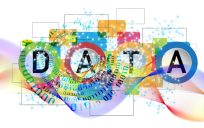Thermal imaging technology in development could one day allow photographers to determine, amongst other things, whether their subjects have been drinking to excess. As reported by Government Technology, currently similar technology has been used at international border crossings, helping to determine if travelers have been infected with influenza or SARS. This technology is being adapted to determine inebriation levels using two different algorithms.
The first algorithm measures the pixel values at certain points in a person’s face, comparing those values to other pictures in a database of drunk and sober facial images. Alcohol causes blood vessels in certain areas of the face to dilate, creating facial “hot spots.” The second approach then compares different regions of the face; in thermal photos of inebriated subjects, the nose tends to be a “hot spot” with the forehead seen as cooler.
What possible implications and uses could this have for government?
Immediately, public safety has been the focus of most speculation for government use – police could utilize thermal imaging to identify drunk drivers. While many field tests for inebriation can be subjective, thermal imaging could offer more definitive evidence of intoxication. There are definite legal implications of using such technology in policing, arousing some controversy around the possibility of public use.
It could also provide a tremendous benefit for public health – use of such technology in emergency rooms could help overwhelmed staff identify patients that need immediate medical attention. In the United States, almost 80,000 people die each year from alcohol related deaths. In a single year (2005) there were 1.6 million hospitalizations and more than 4 million emergency room visits for alcohol-related conditions.
Advances in this technology could have many positive benefits, but alternatively present a number of privacy concerns. Use of such technologies, in the past, has far outstripped the regulations guiding their implementation and use. While the day may be far off when government institutions begin using this technology, it’s not too soon to think about how it should be used.




Leave a Reply
You must be logged in to post a comment.